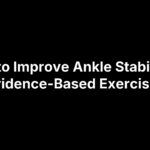Stop an ingrown toenail before it ruins a run or sidelines you at work: trim nails straight across, keep them a hair longer than the skin, choose shoes with wiggle room, slip on moisture-wicking socks, and book a podiatry visit at the first hint of redness. Those five steps handle most flare-ups before they start—and they’re only the beginning.
An ingrown toenail happens when the nail’s edge grows sideways into the surrounding skin, sparking pain, swelling, and sometimes infection. The good news? You can steer clear of that misery with a few easy habits at home. In the next sections you’ll find 12 podiatrist-approved tactics—from a foolproof clipping routine to protective sports gear and smart orthotic use—each backed by simple instructions and the science behind them. We’ll also flag symptoms that mean it’s time to skip the home remedies and head straight to professional care. Let’s keep every step comfortable.
1. Trim Your Toenails Straight Across, Not Rounded
Straight-across cuts are the cornerstone of ingrown-toenail prevention; they tell the nail to grow forward, not inward.
The Science Behind Straight Cuts
Your nail plate is designed to progress in a linear path. Rounding removes side support, letting the corner curl into the sulcus and puncture skin.
Step-by-Step Clipping Guide
- Clean feet and clippers with soap and 70 % alcohol.
- Starting at one corner, take two even, horizontal cuts.
- Leave a paper-thin white edge.
- File lightly.
Common Trimming Mistakes to Avoid
Common flubs: salon-style rounding, tearing off a corner, or “digging out” the nail edge. Excavating at home usually drives the spike deeper and raises infection risk—see a podiatrist instead.
2. Leave a Safe Length: Don’t Cut Nails Too Short
A straight cut only works if there’s enough nail left to act as a barrier. Trim too aggressively and the skin will quickly overtake the edge, setting the stage for an ingrown nail.
Why Length Matters
When the free edge disappears, pressure from socks and shoes pushes the bulging toe pad over the nail plate. The nail then grows upward through soft tissue instead of outward, causing inflammation and infection.
Measuring the Ideal Length
Aim for a sliver of white—flush with the tip of the toe or no more than 1 mm longer. Check from the side: you should see nail, not skin, extending past the pulp.
What to Do if You Accidentally Go Too Short
Don’t panic. Coat the freshly clipped edge with a thin layer of petroleum jelly, cover with a breathable bandage, and keep the toe clean for 24 hours. Watch for redness or throbbing; if pain intensifies, schedule a prompt podiatry visit.
3. Use Proper Tools: Clean, Sharp Nail Clippers
Even perfect trimming technique fails when the instrument crushes instead of slices. Investing a few minutes in tool choice and upkeep is a low-effort, high-impact way to reinforce how to prevent ingrown toenails every time you groom.
Choosing the Right Clipper or Nipper
- Standard lever clipper: ideal for normal, thin nails.
- Heavy-duty nipper: jaws open wider and cut thicker fungal or elderly nails in one press.
- Scissor-style clipper: offers extra control for smaller toes.
If your nails resemble plywood, book a podiatrist visit for a medical-grade nipper to avoid splintering.
How to Disinfect at Home
Soak metal parts in 70 % isopropyl alcohol for five minutes—or boil all-metal tools ten minutes—then dry completely to stop rust and bacteria from hitching a ride under the nail edge.
When to Replace Dull Tools
Tell-tale signs: the clipper squeezes before it severs, leaves ragged edges, or squeaks when closing. Swap for a new pair (or have them professionally sharpened) every 12–18 months.
4. Soak Feet Regularly to Soften Nails
A short soak softens tough keratin, calms swelling, and makes a clean, straight clip almost effortless. It also rinses away sweat and bacteria that can irritate the nail fold.
Optimal Soak Recipes
- Epsom salt: 2 Tbsp / quart warm water
- Soap soak: dime-size squirt antibacterial soap
- Vinegar rinse: 1:4 apple-cider vinegar solution
Choose whichever combo your skin tolerates best.
Frequency and Duration
Soak 10–15 minutes, two or three times weekly; daily if nails are thick. Pat dry before trimming.
When to Skip or Modify a Soak
People with diabetes, neuropathy, or poor circulation should use lukewarm water and limit soaks to five minutes. Skip soaking altogether if skin is broken or infected—see a podiatrist instead.
5. Keep Feet Clean and Dry Between Soaks
A clean, ventilated foot keeps germs and moisture from softening skin around nails—crucial for preventing ingrown toenails.
A Simple Daily Hygiene Routine
Wash feet daily with mild soap, rinse well, then pat—not rub—completely dry, paying special attention between toes; finish with a brief cool hair-dryer burst.
Moisturizing Without Over-Hydrating the Nail Fold
Apply urea or glycerin cream to heels and soles only; leave the nail folds product-free so they stay supple, not soggy.
Sock and Powder Selection
Choose merino or moisture-wicking synthetics, change pairs after heavy activity, and dust shoes or socks with antifungal powder if perspiration is excessive.
6. Wear Correctly Fitted Shoes With Wide Toe Boxes
The quickest way to undo perfect nail care is to cram your toes into narrow real estate. Shoes should shelter the nail plate, not squeeze it—constant side pressure is a top culprit in ingrown nails and blisters alike. When you’re thinking about how to prevent ingrown toenails day-to-day, start with a roomy toe box and a shape that mirrors your natural foot.
Shoe-Fit Checklist You Can Do in the Store
- Stand up: at least ½-inch (a thumb’s width) of space in front of the longest toe
- Wiggle test: all toes move freely, no rubbing on sidewalls
- Afternoon try-on: feet swell later, so fit then for accuracy
Types of Shoes to Avoid
- High heels over 2″ shift weight forward, jamming nails
- Pointed dress shoes funnel toes together
- Ultra-narrow soccer cleats or ballet flats with rigid uppers
Tips for Athletes and Heavy-Duty Workers
- Choose steel-toe or composite boots with an “anatomical” rounded cap
- Rotate pairs to dry fully between shifts
- Add gel insoles to absorb impact and limit forward slide inside the shoe
7. Choose Breathable, Moisture-Wicking Socks
Selecting the right socks keeps skin firm and nail edges dry—both non-negotiable if you’re serious about how to prevent ingrown toenails during busy workdays or long runs.
Fabric Face-Off
Here’s how common fibers compare:
| Fabric | Pros | Cons |
|---|---|---|
| Cotton | Soft, budget-friendly | Stays damp |
| Merino wool | Temperature control, odor-resistant | Pricier |
| Bamboo | Silky, antimicrobial | Wears out faster |
| CoolMax®/poly | Fast-drying, lightweight | Can trap odor |
How Often to Change Socks
Swap into clean pairs after every workout or anytime they feel damp; lingering moisture macerates the nail folds in just a few hours.
Managing Excessive Perspiration
If sweat soaks through anyway, apply 20 % aluminum-chloride antiperspirant before bed and dust shoes with antifungal powder for extra backup.
8. Protect Toes During Sports and High-Impact Activity
Hard stops on the basketball court or repetitive toe‐off in distance running can slam the nail edge into shoe leather thousands of times an hour. A few simple tweaks keep that trauma from undoing your careful nail care routine.
Taping and Padding Methods
- After a warm-up soak and dry, buddy-tape the big toe to its neighbor with ½-inch athletic tape—wrap once around, leaving the nail free.
- Slip on gel toe caps or silicone sleeves for sprint drills or long hikes; they disperse impact and hug the nail plate without squeezing.
Selecting Protective Footwear and Insoles
Choose sport-specific shoes with reinforced, rounded toe boxes and firm heel counters to limit forward slide. Add shock-absorbing insoles or a thin metatarsal pad so the forefoot lands level instead of jamming the hallux upward.
Post-Activity Foot Inspection
Within 30 minutes of finishing, pull off socks and check for nail-fold redness, packed debris, or a blue-black bruise under the nail. Rinse, dry, and treat any hot spots right away to block an ingrown toenail before it starts.
9. Manage Foot Biomechanics With Custom Orthotics or Insoles
If you’re puzzled about how to prevent ingrown toenails despite careful nail care, check your biomechanics. Perfect trimming can’t help much if your step forces the big toe into the shoe. Alignment-correcting insoles spread pressure across the forefoot, letting the nail grow straight.
Why Alignment Affects Nail Growth
Overpronation rolls the hallux inward, making its nail corner saw into skin; a supportive arch lifts and centers the toe.
OTC vs. Custom Orthotics
Store-bought gel inserts cost $20–$50 and last six months. Custom orthotics run $300–$500, survive five years, and are molded to your gait.
Signs You Need a Professional Assessment
Repeat ingrowns, a medial big-toe callus, or chronic plantar fasciitis means book a podiatrist for gait testing and tailored support.
10. Address Underlying Medical Conditions Early
Recurring ingrown nails often trace back to medical issues that warp nail shape or stall healing. Knowing how to prevent ingrown toenails starts with treating these problems early and consistently.
Diabetes, Neuropathy, and Impaired Healing
High blood sugar injures nerves and tiny vessels, dulling sensation and delaying repair. Inspect feet daily, keep skin supple, and see a podiatrist every three to six months.
Fungal Infections and Nail Thickening
Onychomycosis thickens and distorts the plate, letting corners drill into flesh. Start OTC antifungal drops, or discuss prescription pills or laser if yellowing spreads.
When to Consult a Podiatrist Immediately
Book same-day care for pus, foul odor, hot swelling, red streaks, or pain that escalates overnight—signs the ingrown nail is actively infected and dangerous.
11. Use Gentle Nail-Lifting Techniques at First Sign of Ingrowth
Feel a pinch at the corner? Gentle lifting steers the nail outward and stops a full-blown ingrown.
Cotton or Dental Floss Method
After a 10-minute Epsom soak, dry the toe and slide a tiny sterile cotton wisp or plain, unwaxed dental floss under the offending corner. Replace the packing daily after each soak until soreness fades. Keep the cotton no thicker than a match head.
Ointments: Antibiotic vs. Petroleum Jelly
Apply a thin coat of antibiotic cream if skin is broken; otherwise plain Vaseline offers the same germ-blocking, friction-reducing seal.
Warning Signs to Stop and Seek Professional Help
Stop home care and call a podiatrist if pain worsens, pus appears, redness spreads, or walking becomes difficult.
12. Schedule Routine Foot Exams With a Podiatrist
Even flawless home care benefits from a trained eye. A podiatrist can spot subtle contour changes, early fungal infection, or biomechanical quirks long before they evolve into an ingrown toenail or something more serious.
What Happens During an Exam
Expect a painless nail trim with medical-grade tools, an inspection of shoe wear patterns, and a quick gait analysis. If needed, the doctor may thin thick nails, prescribe antifungals, or fit temporary spacers to keep nail edges lifted.
Frequency Recommendations
- Healthy adults: once every 12 months
- Athletes, teens in cleats: every 6–9 months
- Diabetes, neuropathy, or repeat ingrowns: every 3–6 months
Cost and Insurance Tips
Most commercial plans and Medicare cover medically necessary nail care, especially for diabetes or documented pain. Typical out-of-pocket fees run $40–$75 per visit; ask about same-day appointments to nip problems in the bud.
Keep Ingrown Toenails Out of Your Future
Straight-across trims, safe nail length, clean tools, roomy shoes, breathable socks, and prompt podiatry checkups form your six-point shield against ingrown toenails. Build them into your weekly routine, heed early twinges, and you’ll walk pain-free season after season. If you live in Richmond or anywhere in Central Virginia, schedule a preventative foot exam with the specialists at Achilles Foot and Ankle Center online to lock in an appointment.






